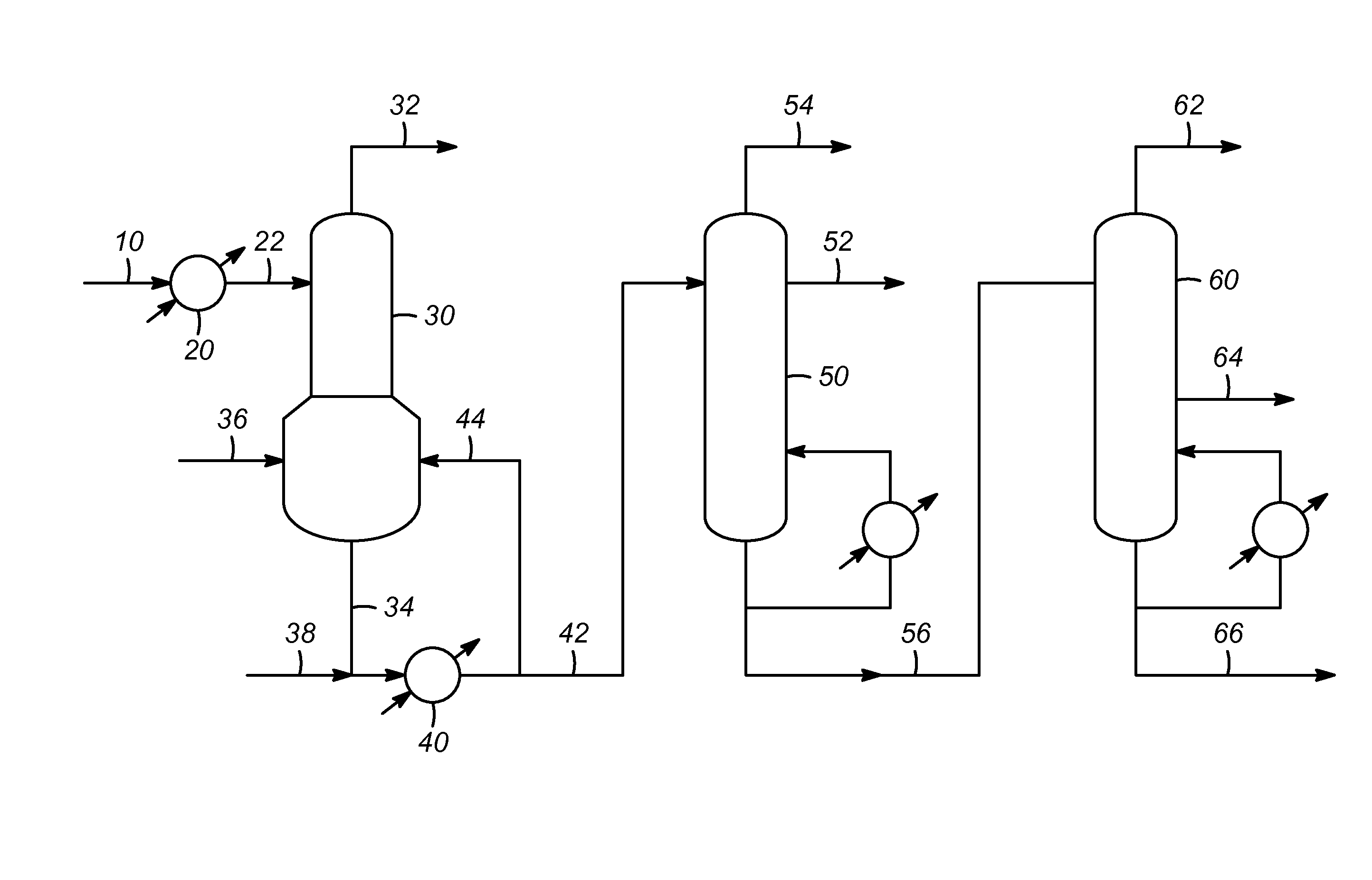Process for upgrading sweetened or oxygen-contaminated kerosene or jet fuel, to minimize or eliminate its tendency to polymerize or foul when heated
a technology of jet fuel and oxygen-contaminated kerosene, which is applied in the field of fuel treatment, can solve the problems of oxygen contamination in jet fuel or kerosene, and achieve the effect of minimizing or eliminating the tendency to polymerize or foul when heated
- Summary
- Abstract
- Description
- Claims
- Application Information
AI Technical Summary
Benefits of technology
Problems solved by technology
Method used
Image
Examples
Embodiment Construction
[0011]Oxygen contamination can reduce the quality of many organic streams. Oxygen or oxygenate contamination in kerosene, and jet-fuel which is derived from kerosene, can have deleterious effects on the specifications. The contamination can come about in numerous ways. One example is by contacts with atmospheric oxygen in an unblanketed storage container or shipping vessel. During the transit time and storage time oxygen is dissolved into the kerosene and jet-fuel. Another example is through mercaptan sweetening in the making of jet fuel. The production of jet fuel from kerosene requires several processing steps such as hydroprocessing or mercaptan sweetening. During the mercaptan sweetening process, oxygen is contacted with the kerosene, and some of the oxygen is residual in the jet fuel after the processing.
[0012]In some jet turbine engines on aircraft, the jet fuel is circulated between the fuel tanks and the engines to control the engine temperatures. Using jet fuel as a thermal...
PUM
| Property | Measurement | Unit |
|---|---|---|
| temperature | aaaaa | aaaaa |
| temperature | aaaaa | aaaaa |
| temperature | aaaaa | aaaaa |
Abstract
Description
Claims
Application Information
 Login to View More
Login to View More - R&D
- Intellectual Property
- Life Sciences
- Materials
- Tech Scout
- Unparalleled Data Quality
- Higher Quality Content
- 60% Fewer Hallucinations
Browse by: Latest US Patents, China's latest patents, Technical Efficacy Thesaurus, Application Domain, Technology Topic, Popular Technical Reports.
© 2025 PatSnap. All rights reserved.Legal|Privacy policy|Modern Slavery Act Transparency Statement|Sitemap|About US| Contact US: help@patsnap.com


